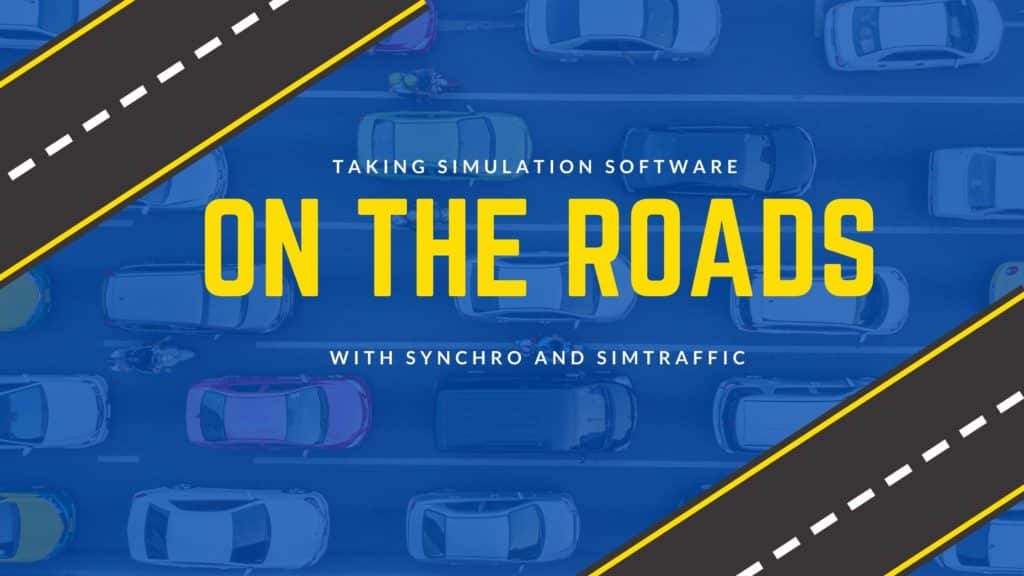

Traffic modeling programs are vital to engineers across the globe, serving engineers, researchers, and planners as they manage and enhance transportation systems that have become increasingly more complex and congested. Synchro (macrosimulation) and SimTraffic (microsimulation), both developed by Trafficware, are two of the most widely used programs.
Synchro is primarily used for modeling traffic flow, traffic signal progression, and optimization of traffic signal timing. Additionally, it can be used to analyze arterials and signalized/unsignalized intersections. Synchro cannot be used to analyze freeways, interchange systems, or ramps, and should only be used to analyze intersections, arterials, and corridors. Synchro can determine the Level of Service, delays, queue lengths, capacity, traffic signal timings, cycle lengths, splits, and offsets.
SimTraffic, on the other hand, models individual cars, trucks, buses, and pedestrians traveling through a network of freeways, streets, and multiple types of intersections. Delays, vehicular queues, travel times, and other measures of effectiveness are computed for these modeled users over a defined simulation period and can be determined for roadway segments and corridors in addition to individual intersections. SimTraffic produces 2 and 3-dimensional animations of the traffic model. These simulations are effective visual tools when needed for public meetings and interactions with clients and various stakeholders.
SimTraffic is included with the Synchro traffic analysis package. SimTraffic models any network that can be analyzed using Synchro. Prior to any analysis being performed in SimTraffic, the network must first be developed. Once the network is developed, SimTraffic can be initiated either from within the Synchro interface or independently. SimTraffic has the ability to output several measures of effectiveness, which are specified by the user, such as delay per vehicle, total stops, travel distance, queue length, travel time, and average speed.
In general, microsimulation models (like SimTraffic) can be more realistic than macrosimulation models (like Synchro). SimTraffic can measure the full impact of queuing and blocking, whereas Synchro has some limitations. However there are some disadvantages that need to be considered for SimTraffic modeling: large computer time and storage requirements, inability to optimize signal timings, calibration of simulation models can be time-intensive, single errors can result in inaccurate results throughout all study intersections.
To better aid, our clients in analyzing existing corridors, developing new roadways, optimizing signal designs and traffic flows, and more, Carroll Engineering’s Traffic & Transportation Department utilizes the Synchro and SimTraffic software to provide sound analysis and designs. Our team is certified with both traffic software programs and has over 30 years of industry experience. For more information about our Traffic & Transportation Engineering services, please visit our website at www.carrollengineering.com/ services/traffic-transportation-engineering/ or directly contact James A. Graham, PE, PTOE Traffic & Transportation Department Manager at jgraham@carrollengineering.com or by phone at 215-343-5700 ext 276.

